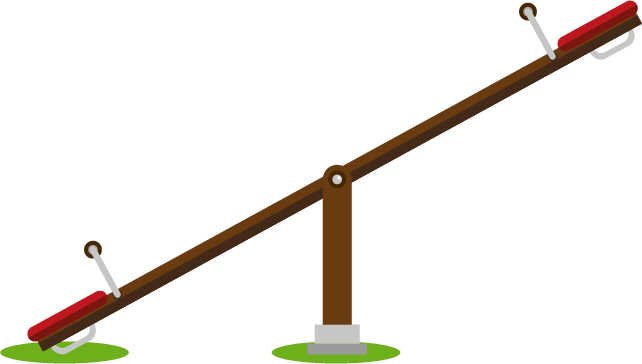










1. Introduction
The early years foundation stage (EYFS) is a comprehensive statutory framework published in 2007 by the Department for Children, Schools and Families (DCSF). The framework sets standards for development, learning and care of children from birth to five. All early years providers will be required to use this framework from September 2008 and to complete an EYFS profile for each child at the end of the academic year in which they reach the age of five. The primary purpose of the EYFS profile is to provide year 1 teachers with reliable and accurate information about each child’s level of development as they reach the end of the EYFS, enabling the teacher to plan an effective, responsive and appropriate cur- riculum that will meet all children’s needs.
Young children will have had a wide range of different experiences and will have a wide range of skills and interests when they join a setting or school. They need a well-planned and resourced curriculum to take their learning forward and to provide opportunities for all children to succeed in an atmosphere of care and of feeling valued. Monitoring of each child’s progress throughout the foundation stage is essential to ensure that they are making progress and that particular difficulties in any of the areas of learning, whatever the cause, are identified and addressed. This process needs to start before the child joins the setting, with practitioners listening to parents’ accounts of their child’s development and noting any concerns. Prompt and appropriate action at this stage could help to prevent children from developing learning difficulties later in their school career.
The professional and dedicated team of Kids’ Kiosk is following the EYFS guidelines and commited to perform the best.
2. Personal, Social and Emotional Development
By the end of the EYFS, children should:
- Continue to be interested, excited and motivated to learn
- Be confident to try new activities, initiate ideas and speak in a familiar group
- Maintain attention, concentrate, and sit quietly when appropriate
- Respond to significant experiences, showing a range of feelings when appropriate
- Have a developing awareness of their own needs, views and feelings, and be sensitive to the needs, views and feelings of others
- Have a developing respect for their own cultures and beliefs and those of other people
- Form good relationships with adults and peers
- Work as part of a group or class, taking turns and sharing fairly, understanding that there needs to be agreed values and codes of behaviour for groups of people, including adults and children, to work together harmoniously
- Understand what is right, what is wrong and why
- Consider the consequences of their words and actions for themselves and others
- Dress and undress independently and manage their own personal hygiene
- Select and use activities and resources independently
- Understand that people have different needs, views, cultures and beliefs, that need to be treated with respect
- Understand that they can expect others to treat their needs, views, cultures and beliefs with respect
3. Communication, Language and Literacy By the end of the EYFS, children should:
- Interact with others, negotiating plans and activities and taking turns in conversation
- Enjoy listening to and using spoken and written language, and readily turn to it in their play and learning
- Sustain attentive listening, responding to what they have heard with relevant comments, questions or actions
- Listen with enjoyment, and respond to stories, songs and other music, rhymes and poems and make up their own stories, songs, rhymes and poems
- Extend their vocabulary, exploring the meanings and sounds of new words
- Speak clearly and audibly with confidence and control and show awareness of the listener
- Use language to imagine and recreate roles and experiences
- Use talk to organise, sequence and clarify thinking, ideas, feelings and events
- Hear and say sounds in words in the order in which they occur
- Link sounds to letters, naming and sounding the letters of the alphabet
- Use their phonic knowledge to write simple regular words and make phonetically plausible attempts at more complex words
- Explore and experiment with sounds, words and texts
- Retell narratives in the correct sequence, drawing on language patterns of stories
- Read a range of familiar and common words and simple sentences independently
- Know that print carries meaning and, in English, is read from left to right and top to bottom
- Show an understanding of the elements of stories, such as main character, sequence of events and openings, and how information can be found in non-fiction texts to answer questions about where, who, why and how
- Attempt writing for different purposes, using features of different forms such as lists, stories and instructions
- Write their own names and other things such as labels and captions, and begin to form simple sent
4. Problem Solving, Reasoning and Numeracy
By the end of the EYFS, children should:
- Say and use number names in order in familiar contexts
- Count reliably up to ten everyday objects
- Recognise numerals 1 to 9
- Use developing mathematical ideas and methods to solve practical problems
- In practical activities and discussion, begin to use the vocabulary involved in adding and subtracting
- Use language such as ʹmoreʹ or ʹlessʹ to compare two numbers
- Find one more or one less than a number from one to ten
- Begin to relate addition to combining two groups of objects and subtraction to ʹtaking awayʹ
- Use language such as ʹgreaterʹ, ʹsmallerʹ, ʹheavierʹ or ʹlighterʹ to compare quantities
- Talk about, recognise and recreate simple patterns
- Use language such as ʹcircleʹ or ʹbiggerʹ to describe the shape and size of solids and flat shapes
- Use everyday words to describe positio
5. Knowledge and Understanding of the World By the end of the EYFS, children should:
- Investigate objects and materials by using all of their senses as appropriate
- Find out about, and identify, some features of living things, objects and events they observe
- Look closely at similarities, differences, patterns and change
- Ask questions about why things happen and how things work
- Build and construct with a wide range of objects, selecting appropriate resources and adapting their work where necessary
- Select the tools and techniques they need to shape, assemble and join materials they are using
- Find out about and identify the uses of everyday technology and use information and communication technology and programmable toys to support their learning
- Find out about past and present events in their own lives, and in those of their families and other people they know
- Observe, find out about and identify features in the place they live and the natural world
- Find out about their environment, and talk about those features they like and dislike
- Begin to know about their own cultures and beliefs and those of other people
6. Physical Development
By the end of the EYFS, children should:
- Move with confidence, imagination and in safety
- Move with control and coordination
- Travel around, under, over and through balancing and climbing equipment
- Show awareness of space, of themselves and of others
- Recognise the importance of keeping healthy, and those things which contribute to this
- Recognise the changes that happen to their bodies when they are active
- Use a range of small and large equipment
- Handle tools, objects, construction and malleable materials safely and with increasing control
7. Creative Development By the end of the EYFS, children should:
- Respond in a variety of ways to what they see, hear, smell, touch and feel
- Express and communicate their ideas, thoughts and feelings by using a widening range of materials, suitable tools, imaginative and role- play, movement, designing and making, and a variety of songs and musical instruments
- Explore colour, texture, shape, form and space in two or three dimensions
- Recognise and explore how sounds can be changed, sing simple songs from memory, recognise repeated sounds and sound patterns and match movements to music
- Use their imagination in art and design, music, dance, imaginative and role-play and stories
8. Children with English as an additional language
Many children in early years settings will have a home language other
than English. Practitioners should value this linguistic diversity and provide opportunities for children to be acquinted as smoothly to their new linguistic environment as possible.
Learning opportunities should be planned to help children develop their English and support provided to help them take part in other activities by, for example:
- building on children’s experiences of language at home and in the wider community by providing a range of opportunities to use their home language(s), so that their developing use of English and other languages support one another;
- providing a range of opportunities for children to engage in speaking and listening activities in English with peers and adults;
- ensuring all children have opportunities to recognise and show respect for each child’s home language;
- providing bilingual support, in particular to extend vocabulary and support children’s developing understanding;
- providing a variety of writing in the children’s home languages as well as in English, including books, notices and labels;
- providing opportunities for children to hear their home languages as well as English, for example through use of audio and video materials.
9. Play
Well-planned play, both indoors and outdoors, is a key way in which young children learn with enjoyment and challenge. In playing, they behave in different ways: sometimes their play will be boisterous, sometimes they will describe and discuss what they are doing, sometimes they will be quiet and reflective as they play.
The role of the practitioner is crucial in:
- planning and resourcing a challenging environment;
- supporting children’s learning through planned play activity;
- extending and supporting children’s spontaneous play;
- extending and developing children’s language and communication in their play. Through play, in a secure environment with effective adult support, children can:
- explore, develop and represent learning experiences that help them make sense of the world;
- practise and build up ideas, concepts and skills;
- learn how to control impulses and understand the need for rules;
- be alone, be alongside others or cooperate as they talk or rehearse their feelings;
- take risks and make mistakes;
- think creatively and imaginatively;
- communicate with others as they investigate or solve problems;
- express fears or relive anxious experiences in controlled and safe situations.









